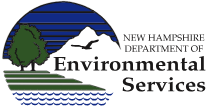Wetlands
Preserving and protecting New Hampshire’s tidal and freshwater wetlands from unregulated alteration.
New Hampshire’s diverse natural resources support many of the activities that drive its economy. Residents, businesses and visitors enjoy New Hampshire wetlands, streams, lakes and seacoast for their natural beauty and recreational opportunities.
In addition to their economic value, New Hampshire wetlands are of great importance for flood control, water quality, water storage and recharge for both groundwater and surface waters. These resources are even more critical with the expected increase in frequency and severity of storm events associated with climate change. Wetlands also support the food chain, providing food and habitat for a variety of aquatic and upland plants and wildlife.
Although New Hampshire has lost fewer wetlands to filling and dredging than many neighboring coastal states, landscape change poses a significant challenge to their protection. It is found to be for the state's public good and welfare to protect and preserve both tidal and fresh waters and wetlands (including lakes, ponds, rivers, streams, marshes, forested wetlands and peatlands) from unregulated despoliation. These resources provide important functions and values, such as:
- Absorbing flood waters.
- Treating stormwater.
- Recharging groundwater supplies.
- Providing habitat for fish and wildlife.
- Providing economic and recreational value.
Activities in wetlands and surface waters such as excavation, removal, filling, dredging and/or construction of structures in or on any bank, flat, marsh, forested wetland or adjacent to waterbodies, generally requires wetlands permitting review and approval, in accordance with the Fill and Dredge in Wetlands Act (RSA 482-A), unless otherwise specified by state statute or rule.
Emergency Work in Wetlands
If there is an immediate threat to public safety, public health, public infrastructure or private property caused by a natural disaster, public agencies and private property owners can work in wetlands jurisdictions without a permit or prior authorization, as long as they file an after-action report. This paperless form is also known as a Wetlands Work During Emergencies Without Prior Authorization report. If there is an imminent threat, applicants can also request emergency authorization to prepare ahead of time. For more information on emergency authorizations, please consult our Wetlands Emergency Authorizations fact sheet.
This video provides an overview of each type of Priority Resource Area in New Hampshire. Resources available to help find Priority Resource Areas include the Natural Heritage Bureau (NHB) DataCheck Tool and NHDES Wetlands Permit Planning Tool.
Latest News
Related Content
Streams and Crossings
Planning a culvert, bridge or other stream crossing project? Details and information on best management practices for achieving geomorphic and hydraulic compatibility.
Coastal Projects
Projects that might impact tidal wetlands or work within the 100-foot upland tidal buffer zone must consider resiliency in the face of future flood risks and sea level rise projections.
Docking Structures and Shoreline Stabilization
Shoreline stabilization projects and docking structures involve dredge, fill, or the placement of structures in tidal and freshwaters and associated banks.
Protected Shorelands and Shorelines
Our shorelands and shorelines are among our most valuable and fragile natural resources. Unregulated impacts can deteriorate water quality and affect our landscapes.
Contact Us:
NHDES Wetlands Bureau
Concord: (603) 271-2147
Portsmouth: (603) 559-1500
Fax: (603) 271-6588




